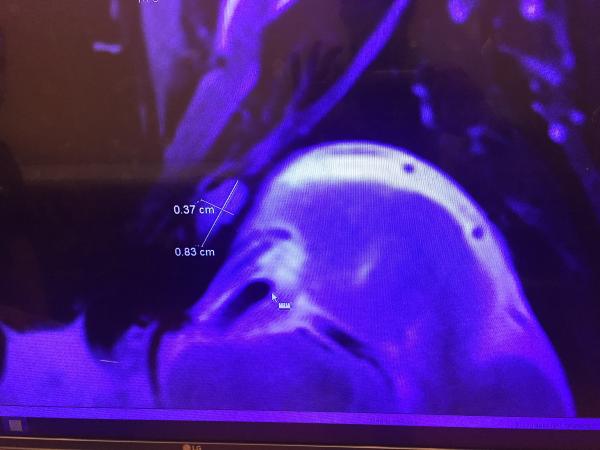
We all know that as we get older, our bodies won't work as well as they once did. As a result, we all have certain expectations as we age. For instance, many of us expect bad backs, achy joints, poor memory, and being hard of hearing. Some of us know that our family's medical history includes cancer or heart disease, and we expect something similar for ourselves.
However, no matter how mentally prepared one might be for aging, the loss of things that we once took for granted can still come as a shock. In the 21st Century, nobody really expects to go blind, but it absolutely can and does happen. More than two million Americans suffer from age-related macular degeneration, which causes severe vision loss. There is no cure.
My dad is undergoing something like this, but nowhere nearly as dramatic and frightening as macular degeneration. He was recently diagnosed with sixth nerve palsy, which prevents him from abducting his left eye (i.e., moving it sideways, away from the center of the body). Over time, his eye began to drift inward toward his nose. He suffered from double vision and had to wear an eye patch.
What Causes Sixth Nerve Palsy?
Sixth nerve palsy simply means paralysis of the sixth nerve. There are twelve pairs of cranial nerves, and the "sixth nerve" is, as one might expect, the sixth one in the series. On one end, it attaches to the brain stem; on the other, to a muscle near the eyeball. When the nerve fires, it causes the muscle to contract, turning the eye outward.
What causes the nerve to stop working? According to my dad's neurologist, a few things: Something that is a nuisance but will go away (like a viral infection), something benign (like a cyst), or something terrifying (like cancer). Because his condition continued to deteriorate, a viral cause was unlikely. To help aid the diagnosis, my dad got an MRI, depicted below:

As shown, the doctor observed an unusual growth that was 0.37 cm by 0.83 cm located near the left sixth cranial nerve. Because the growth didn't get any bigger over time, it is (thankfully) unlikely to be cancer. That leaves the last option: Something benign is pushing against the nerve. The doctor thinks it's a non-malignant tumor.
Surgery for Sixth Nerve Palsy
My dad went under the knife -- or, in this case, a drill -- in an attempt to cure his problem. Once it leaves the brain stem, the sixth cranial nerve winds its way through the meninges, which are membranes that surround the brain and are located beneath the skull. Accessing the nerve requires drilling through the skull, so my dad literally had a hole in his head. The doctor then went in through the hole to remove the tumor.
Unfortunately, he was unable to. After the surgery, the doctor said that the risk of removing the tumor was greater than the benefit because there was a significant potential of causing collateral damage in the area. So instead, he created some extra room for the tumor in order to relieve the pressure off the sixth nerve.
We won't know for a few months if the surgery worked. My dad's sixth nerve had already been damaged and the muscle it controlled atrophied. So, now we pray, hope, and wait.



